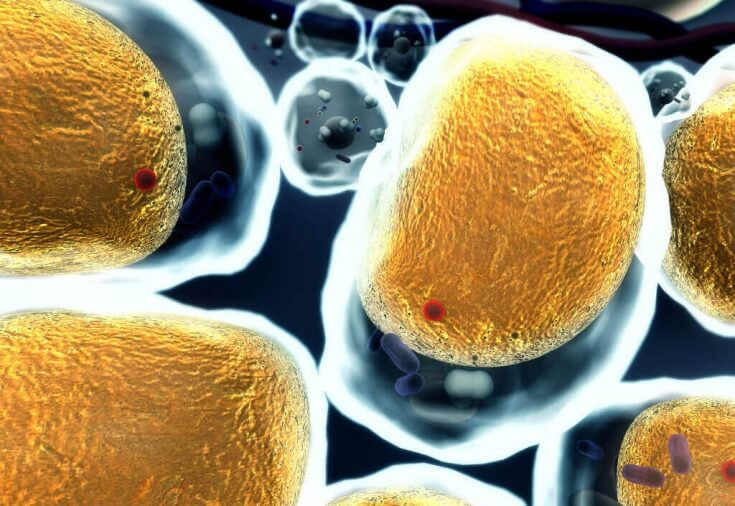The human body is made up of a huge number of cells that need to continuously convert available fuel into energy to maintain life.
In fact, a significant part of our body is devoted precisely to the process of constantly supplying fuel to each cell and removing the waste that is generated as a result of energy production. Responsible for this: & nbsp; respiratory, digestive, circulatory and lymphatic, as well as partially endocrine and nervous systems.
Metabolic Flexibility – it is the ability of the body to use various types of fuel, the main ones being glucose (sugar) and fat, depending on their availability and the needs of the body. Estet-portal.com will talk about violations of this flexibility and how to restore it.
- Why Metabolic Flexibility is Important for the Body
- What happens when metabolic flexibility is compromised
- Types of disorders and methods of restoring metabolic flexibility
Why metabolic flexibility is important for the body
Healthy body cells can use available fuels (mainly glucose and fat) by activating the most appropriate metabolic signaling network to store or expend energy.
Metabolic Flexibility – the ability of the body to burn glucose or fat, depending on their availability and its needs.
The availability and use of energy by the human body changes over time. We can sleep or run, be in cold or hot conditions, eat or starve. Our ability to adapt to such conditions largely depends on the metabolic flexibility of our cells, in particular muscle cells, which use a significant proportion of the energy in the body.

For example:
- when we consume carbohydrates, metabolic flexibility helps us to control blood glucose as a priority source of energy;
- when we consume fat without carbohydrates, due to metabolic flexibility fat is directed to be burned rather than stored;
- during fasting (for example, when we sleep), the body burns available fat, eliminating the need to absorb other sources of fuel (sugar);
- it is metabolic flexibility that allows the body to burn fat deposits and produce more energy required under conditions of intense exercise.
What Happens When Metabolic Flexibility is Lost
When metabolic flexibility is compromised, the body's cells can no longer easily switch between the two primary fuels, resulting in a reduced ability to adapt properly to changing conditions, for example:
- when we ingest carbohydrates, the body cannot get rid of blood glucose fast enough, resulting in poor glycemic control – significant fluctuations in blood sugar levels;
- the ability to burn fat decreases when eating fatty foods;
- the ability to increase energy production after meals is also reduced (so-called "afternoon thermogenesis");
- the body's ability to burn its own fat also decreases during fasting; as a result, the need for glucose increases (a person begins to crave sweets);
- during exercise, the body burns fat less efficientlyo, and the need for glucose still increases.

What are the consequences of such changes in the functioning of the body?
- Sharp and frequent swings in blood sugar make us more addicted to stimulants and sweets;
- constant need for glucose means that hunger appears soon after a meal;
- the body starts to save energy, as a result of which we feel constant fatigue.
In short, lack of metabolic flexibility is fraught with cravings for sugary foods, weight gain, and difficulty shedding excess
Lack of
metabolic flexibilityfor glucose – inability to increase glucose oxidation – limited by the degree of glucose utilization: cells cannot burn more glucose because they are insulin resistant. Lack of
metabolic flexibilityin regards to fat – failure to increase fat oxidation in response to fasting or fat intake – is a consequence of mitochondrial dysfunction. Mitochondria – tiny organelles present in every cell that convert fuel and oxygen into energy through the Krebs cycle.
This way:impaired glucose oxidation is caused by insulin resistance;
Mitochondrial dysfunction is the cause of impaired fat oxidation;
both metabolic defects are manifested at the level of individual cells.
Ways to restore metabolic flexibility:
- In order to increase insulin sensitivity
- and therefore metabolic flexibility for glucose, it is necessary to reduce body fat mass. However, weight loss alone does not improve the ability to oxidize fat.
Exercise has been known to help temporarily lower blood sugar levels (even in cases of insulin resistance, which improves with exercise). However, the most important thing is that physical activity is indeed able to restore fat oxidation. - How much exercise do you need? Approximately 45 minutes of moderate-intensity aerobic exercise 3x5 times a week or 30 minutes of moderate-intensity aerobic exercise + strength training 3 times a week. This amount of exercise has been shown in studies to restore fat oxidation to normal levels. In addition, exercise helps to improve
- and ensure adequate protein intake.
- Based on the above, estet-portal.com would like to emphasize that the information available today shows that exercise of moderate intensity improves the ability to oxidize fat, and getting rid of fat normalizes the process of glucose oxidation.
Metabolic diet: stages of hormonal weight lossYouTube






Add a comment